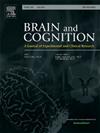The same label, different processes: What lies behind the term “mental simulation” in the embodied cognition literature?
IF 1.4
3区 心理学
Q3 NEUROSCIENCES
引用次数: 0
Abstract
Over recent decades, cognitive science has increasingly focused on the theory of “Embodied Cognition”, an “umbrella” term that encompasses several often non-converging approaches. A main construct underlying these approaches is the notion of “Mental Simulation”. This paper argues that mental simulation is far from being a unitary construct and proposes a taxonomy in which different types of mental simulations are placed on a continuum, making it possible to disentangle the complex nature of mental simulation. To support this taxonomy empirically, a series of studies are reviewed showing that mental simulation is a fundamental cognitive process, underlying several abilities (e.g., action observation, language comprehension, mental imagery). Although the same label is used in different domains, the literature review supports the necessity to distinguish mental simulations on at least two dimensions, namely the process and the result of this process. The process can be automatic or voluntary, fast or slow; the outcome can range from a mental representation to motor resonance. Our analysis underscores the importance of a nuanced understanding of the cognitive, phenomenological and neural aspects of mental simulation. This helps clarify the state of knowledge in this domain while the taxonomy provides future research with a solid conceptual ground.
相同的标签,不同的过程:在具身认知文献中,“心理模拟”一词的背后隐藏着什么?
近几十年来,认知科学越来越关注“具身认知”理论,这是一个涵盖了几种通常不收敛的方法的“总括”术语。这些方法背后的一个主要概念是“心理模拟”。本文认为,心理模拟远不是一个单一的结构,并提出了一种分类法,其中不同类型的心理模拟被放置在一个连续体上,使得解开心理模拟的复杂性成为可能。为了从经验上支持这一分类,对一系列研究进行了回顾,表明心理模拟是一种基本的认知过程,是几种能力(如行为观察、语言理解、心理意象)的基础。虽然在不同的领域使用相同的标签,但文献综述支持至少在两个维度上区分心理模拟的必要性,即过程和过程的结果。这个过程可以是自动的或自愿的,可以是快的或慢的;结果可以从心理表征到运动共振。我们的分析强调了细致入微地理解心理模拟的认知、现象学和神经方面的重要性。这有助于澄清该领域的知识状态,而分类法为未来的研究提供了坚实的概念基础。
本文章由计算机程序翻译,如有差异,请以英文原文为准。
求助全文
约1分钟内获得全文
求助全文
来源期刊

Brain and Cognition
医学-神经科学
CiteScore
4.60
自引率
0.00%
发文量
46
审稿时长
6 months
期刊介绍:
Brain and Cognition is a forum for the integration of the neurosciences and cognitive sciences. B&C publishes peer-reviewed research articles, theoretical papers, case histories that address important theoretical issues, and historical articles into the interaction between cognitive function and brain processes. The focus is on rigorous studies of an empirical or theoretical nature and which make an original contribution to our knowledge about the involvement of the nervous system in cognition. Coverage includes, but is not limited to memory, learning, emotion, perception, movement, music or praxis in relationship to brain structure or function. Published articles will typically address issues relating some aspect of cognitive function to its neurological substrates with clear theoretical import, formulating new hypotheses or refuting previously established hypotheses. Clinical papers are welcome if they raise issues of theoretical importance or concern and shed light on the interaction between brain function and cognitive function. We welcome review articles that clearly contribute a new perspective or integration, beyond summarizing the literature in the field; authors of review articles should make explicit where the contribution lies. We also welcome proposals for special issues on aspects of the relation between cognition and the structure and function of the nervous system. Such proposals can be made directly to the Editor-in-Chief from individuals interested in being guest editors for such collections.
 求助内容:
求助内容: 应助结果提醒方式:
应助结果提醒方式:


